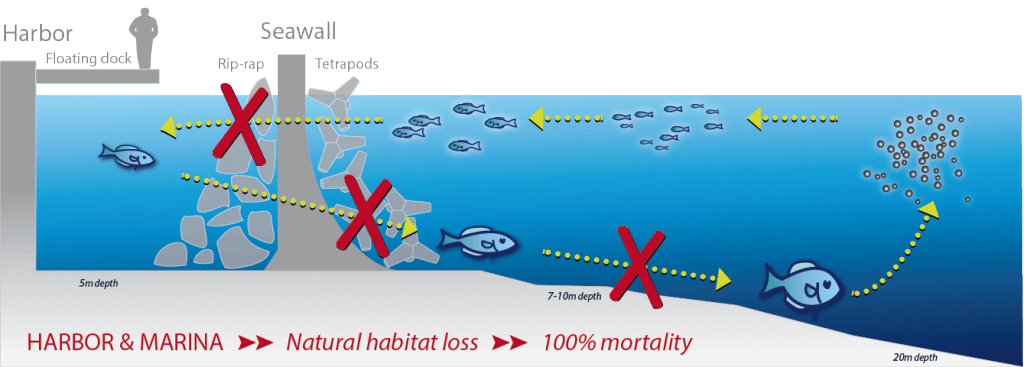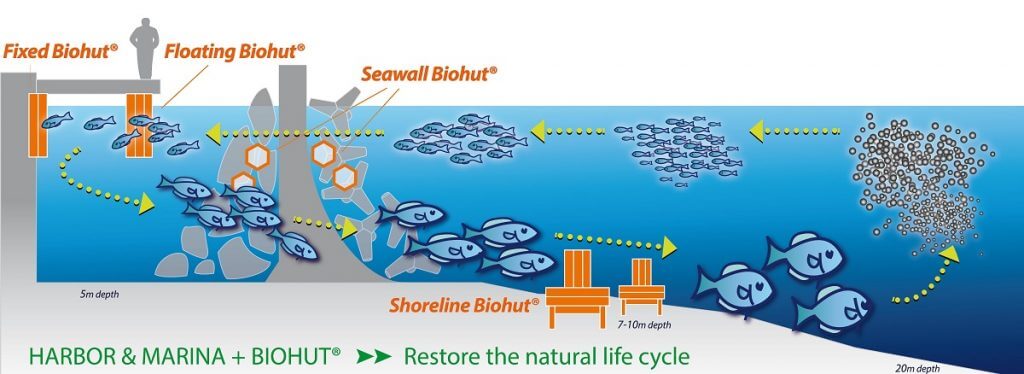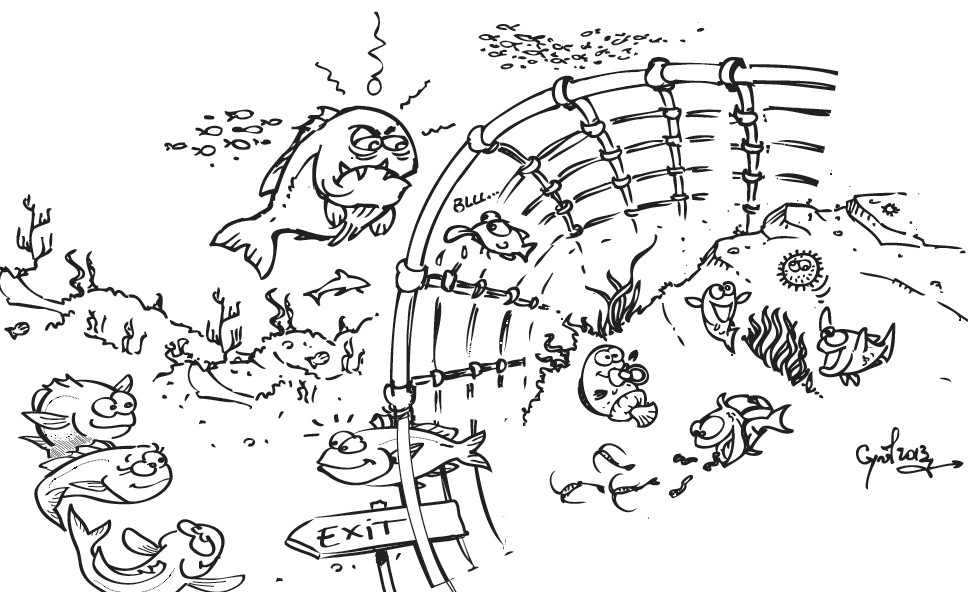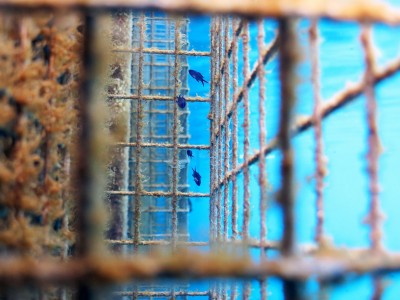What is a nursery?
The nursery habitat is characteristic of the morphology and needs from the species:
1) An adapted and diversified nutrition.
2) A favorable habitat for post-larvae installation, which protects them from predators and pressures during their juvenile period up to the “refuge” size.
3) An environment where juveniles grow faster and have a better survival rate than elsewhere.
4) A location that allows migration towards adult habitats.
Why working on the nursery function in port environment?
Post-larval stage is the last pelagic larval stage of the life cycle that ends, for the majority of coastal marine animal species, by a colonization phase of the original coastal habitat. During this crucial phase, almost 95% of post-larvae disappear in a few days by predation, lack of habitat or pollution.
A portion of them is found in the sheltered areas of ports, which appear at first sight to be adapted to their development thanks to their calm, rich in nutrients waters. Yet up to 100% of these post-larvae can disappear. Indeed, the port can turn into a real trap, as its straight docks don’t provide any shelter from predation.
Today, artificial habitats exist that can restore the ecological nursery function of shallow rocky and sandy bottoms degraded by the development of coastal infrastructures (ports, pipes, offshore windfarm etc.). These artificial nurseries aim to restore the ecosystem service of nursery by protecting post-larvae and young recruits from predation, while providing them with adequate food. They can thus grow up to the “the refuge size” in order to effectively contribute to adult populations.

YESTERDAY In a natural environment, coastal fish depend on specific habitats for each stage of growth. Rocky and sandy bottoms on shallow shorelines are essentials for young fish seeking shelter and food. © Ecocean

TODAY Coastal development impacts the survival of young fish at key life stages by removing crucial habitat, which leads to a decrease in adult population. © Ecocean

TOMORROW, with Biohut® The Biohut® system creates a new nursery habitat and helps strengthen the viability of coastal fish population by improving their survival. In this way the Biohut® contributes to the regeneration of damaged ecosystems.
To learn more : First scientific publication of A rank validating the efficacy of Biohut® in marinas



